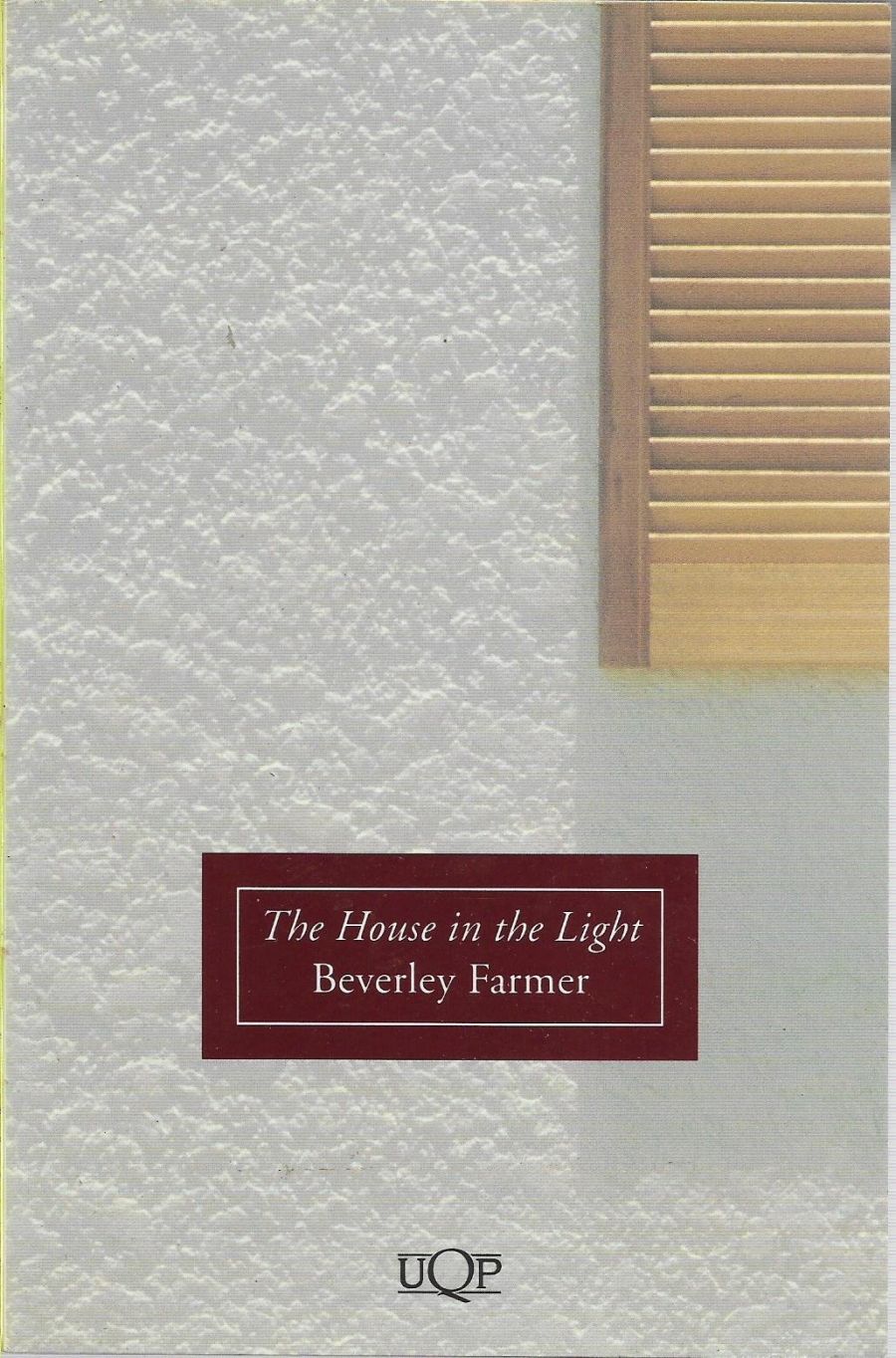
- Free Article: No
- Contents Category: Fiction
- Review Article: Yes
- Online Only: No
- Custom Highlight Text:
Beverley Farmer is one of a group of women writers celebrated in Gillian Whitlock’s collection of excerpts from their work, Eight Voices of the Eighties. Its introduction begins with a remark attributed to Elizabeth Jolley where she calls the 1980s in Australia ‘a moment of glory for the woman writer’. Beverley Farmer’s first novel, Alone, was published in 1980, at the beginning of this period of renaissance and recognition of women’s writing as central to a national literary culture.
- Book 1 Title: The House in the Light
- Book 1 Biblio: University of Queensland Press, $16.95 pb
During the decade and a half since then, Farmer has continued to write and publish; two short story collections, Milk and Home Time; a mixed genre work, A Body of Water; and a novel, The Seal Woman. Yet despite her work having achieved a consistent and admired place in contemporary Australian writing, Farmer has been given perhaps the least public acknowledgment of those original eight voices.
Farmer’s work, however, is especially interesting as she is one of the few contemporary writers who has taken up from an Australian perspective the complicated narrative of multicultural Australia. Most of the stories in Milk and Home Time are set in Australia and Greece, while The House in the Light extends to novel length the story of Bell, the character whose life provides the impulse for many of the short stories. An Australian woman who marries a Greek man, Grigori, who lives for part of their marriage in his Greek village, who has his child and divorces him, Bell is now fifty.
The House in the Light opens as she returns to her former husband’s Greek village for only the second time since her original leave-taking, before her now eighteen-year-old son was born. This revisiting is established in the narrative as a continual folding back into a past which is Bell’s history and Bell’s memory journey, but which is enriched by other characters’ remembrances, notably those of her mother-in-law, Kyria Sofia, the matriarch of the house, as well as by family and village stories of that past.
The effect of the shifting, fluid, and eventually multivocal narrative, interwoven with the dreams and myths, is to convey layers of cultural meanings, ones that carry the dislocation of being different as well as the moments of connectedness that can occur across cultural divisions. Eventually it constructs a kind of open, female ethnography of a place in which Bell is always other, but to which she is also drawn and in which she is also implicated, through earlier associations and most of all through her son Yanni who carries his dead grandfather’s name as well as that of two of his Greek cousins.
The occasion of Bell’s return, which is unheralded and about which she feels more than ambivalent, is twofold. Grigori’s father has recently died and it is the Greek Easter. Bell arrives on Palm Sunday and leaves on Easter Monday, and the significances in this time frame are pervasive. She struggles with Kyria Sofia’s demands (and the village’s expectations) that she will join her Orthodox mourning of her husband’s death as well as the Easter rituals. These conflicts entangle with Bell’s own self-doubt as well as her wry outsider’s perspective.
Bell is a photographer who at the time of the novel is making a film composed of sounds and images and based on her travels in Greece. Kyria Sofia’s house provides the novel’s setting. The house which is both alien and familiar to Bell is captured in the light of the photographer’s gaze, but it is also a palpable presence that shifts Bell’s own sense of self. It’s a body that houses the bodies of those present and past; freezing cold around the room where the somba, the stove, is; smelly and dirty and claustrophobically intimate. Here there are no private spaces and no concept of privacy. Bell constantly fears the kind of discovery she underwent in the past when her mother-in-law scrutinised her underwear to find out why she had not become pregnant.
This vital house, existing ‘at the marrow of our lives’, holds the family history and projects its future in the two olive trees that the now dead grandfather planted late in his illness – olives grow so slowly they ripen only for the children. Yet Bell’s journey, which she now mocks to herself on its last day – ‘Q: I wonder what you came for. / A: I need a new life’ – remains inconclusive. It seems there can be no reconciliation, no absolution.
Finally though Bell’s purgatorial Easter week – and the book – ends with a poignant parting from the mother-inlaw she both loathes and loves, realised in the physical, bodily presence of the old woman and in sight of the whole village,
She can’t loosen her grip somehow either, and the other will not let go. ‘E, Bella? Sorry,’ the bundle in her arms is murmuring, and the eyes gazing straight up into hers now in their pouches of blood are the eyes of a hurt child. Everyone has stopped breathing.
For moment we may have too. The House in the Light is intensely satisfying and the complexity of technique and form replicates the complexity of relations between two cultures. Always lyrical, the prose is visual and evocative of mood and emotion. At the beginning Bell remembers the ‘house of her dreams [which] had white walls hung and luminous with grapes, and children, and hens like brown lampshades in the summer light.’ It’s also sensuously physical writing, traced by blood and pain and anger but also by joy. Such a work keeps alive the mixed and difficult breathing of Greeks and Australians.


Comments powered by CComment